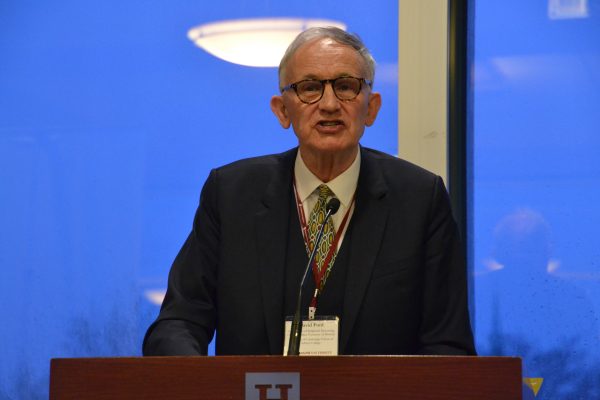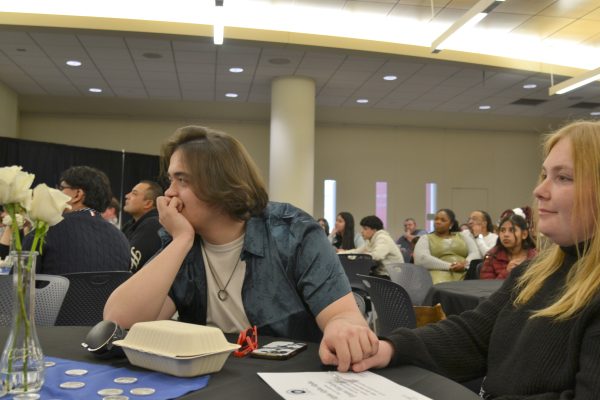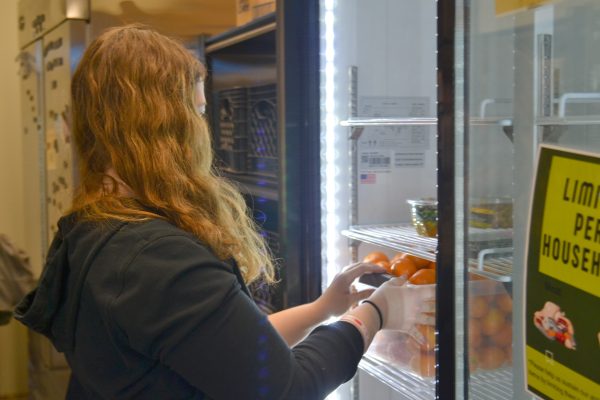BER takes on accessibility
HUSC Board of Representatives takes action towards a more accessible Hamline.
From the planted seeds by a few at the beginning of the school year, accessibility issues have bloomed into the focus of the HUSC Board of Elected Representatives (BER) this spring semester.
“Before it was brought to my attention, I wasn’t aware of any issues,” said the Chair of the Board of Elected Representatives and junior, Jeffrey Mund. “[Since then] 40 thousand [dollars] out of our 48 [thousand dollars] have been voted to accessibility. ”
BER hopes to make everyone aware of the limited accessibility at Hamline because it is not as accessible for those with disabilities as they and other members of the Hamline Community would like to see.
“I think [accessibility at Hamline is] good,” said, Steve Anderson, “however it can be better.”
Mund gave some examples of how some buildings on campus are somewhat accessible but not completely.
“On the first floor of Anderson, if someone in a wheelchair were to go to the bathroom, they could get into the bathroom, but they wouldn’t be able to get out and that alone is terrible” said Mund, “Manor and Old Main are not very accessible unless you were going into the basement of Manor.”
Hamline has not always been as accessible as it is today.
“I’m in my fourth year, so we have made some progress and there’s always progress that needs to be made” said Anderson, “Sometimes it’s slower than people would like but it is progress.”
It is believed that the lack of accessibility at Hamline has deterred students with disabilities from attending.
“To know that I couldn’t live in some of the dorms that my peers live in or even just enter the building in the same way as everyone else, that would definitely keep me from attending,” Mund said.
Steve Anderson reminds us that perception also plays a role.
“I think the large part of it is the perception that folks think Hamline is not accessible at all and that’s not true either,” Anderson said. “With that perception we’re missing a lot of students that would be great to have as our student community.”
These reasons and others have fueled BER’s dedication and efforts towards making Hamline a more accessible school. There was one main goal in particular that BER was working towards.
“Our main goal this year was to get a ramp into West Hall” Mund said “That, at this point, according to facilities, is not feasible with our budget.”
Although BER understands why the decision was made regarding the ramp, they are concerned about the future of the project.
“That is something we are a little worried about, because it’s been put into what is known as the project call. That is a list of improvements that the university is looking to make,” Mund said. “Right now there is the danger of it falling in between the cracks with everything else.”
Mund believes the university should take steps to show their commitment to making Hamline a more accessible university.
“I think a way that the university could make it clear that they dedicated to being accessible for all is putting in a ramp at West Hall,” Mundsaid “that itself would show that. . .they are committed. Another step they could take is bringing in an ADA (Americans with Disability Act) audit.”
At their meeting on Apr. 4, a resolution was passed, solidifying BER’s new project. They are now working towards putting in more door operators and handicap accessible water fountains throughout campus. To help spread the word out about their efforts and to increase accessibility awareness, BER is planning an accessibility fair that will be held on Apr. 26, in the Anderson Forum during convo hour.





